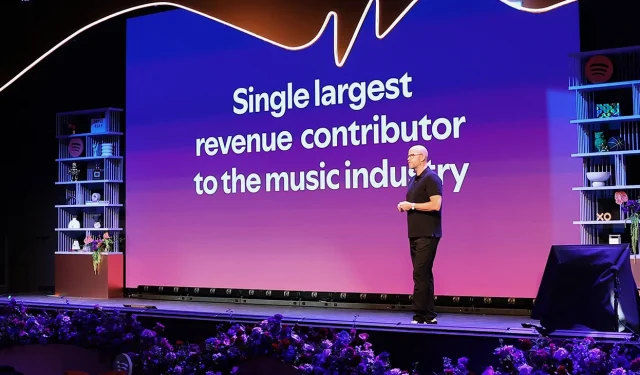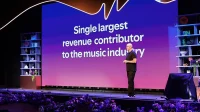Spotify’s Loud and Clear Report Highlights Support for Independent Artists
On Wednesday, Spotify unveiled its updated Loud and Clear report, revealing that for the second consecutive year, the streaming platform allocated 50% of its royalties to independent musicians. This move reflects Spotify’s commitment to supporting a diverse music ecosystem.
Significant Financial Contributions to Indie Artists
In the past year, Spotify distributed approximately $10 billion to music rights holders, with around $5 billion directed toward independent labels and artists. Notably, this marks a $500 million increase compared to 2023—a trend indicating growing opportunities for independent creators in the digital music landscape.
“It speaks to opportunities and choices that artists have today,” Sam Duboff, Spotify’s global head of marketing and policy for the music business, shared with The Hollywood Reporter. “A lot of what streaming and Spotify has enabled is for artists to be in more control over how they want to navigate their career. You’ve got tons of artists choosing to go the major label path getting life-changing advances and resources that come with that; you see indie labels in the middle with some of those same services but artists getting a larger cut; then you’ve got tons of fully independent DIY artists who are keeping 100 percent of their royalties and promoting themselves.”
Spotify’s Profit Milestone and Transparency Initiatives
This report emerges just weeks after Spotify celebrated its first full year of profitability, achieving this milestone 18 years after its inception in 2006. The Loud and Clear initiative, launched in 2021, aims to promote transparency regarding how artists are compensated for their music and to contextualize the overall payout structure within the streaming industry.
Despite these advances, Spotify continues to face criticism, particularly from smaller independent artists. Many artists express concerns regarding insufficient compensation for their streams. In fact, a significant portion of the songs on the platform fail to generate enough streams to qualify for monetization. Additionally, a contentious bundling strategy implemented by Spotify last year led to a lawsuit from the Mechanical Licensing Collective, although the case was dismissed by a judge in January. According to the new Loud and Clear report, Spotify paid out $4.5 billion to songwriters and publishers over the past two years.
“The growth of people uploading music is always going to outpace the growth rate of the number of people making it,” Duboff stated. “We see our role as providing as much transparency and data about our role in the ecosystem as we can, and our hope’s been that would inspire more transparency from other parts of the ecosystem. No other streaming service has published transparent data about their payouts or how many artists are generating different amounts. Obviously, there are a lot of narratives people talk about when talking about royalties; I think over time the data and facts will start to overwhelm the narratives.”
Investment in Independent Music and Diversity in Global Sounds
The report underscores the increasing prominence of the independent music sector within the larger music industry. Recently, Universal Music Group, the world’s largest music company, invested $775 million to acquire Downtown Music Holdings, the parent organization of music distribution platforms CD Baby and FUGA. Meanwhile, Concord is reportedly negotiating to acquire a stake in the distribution platform Stem, signaling a shift toward recognizing the value of independent artists.
In terms of financial achievements, Spotify disclosed that 1,500 artists earned at least $1 million in royalties in 2024, an increase from 1,350 the previous year. The platform also noted that the number of artists generating royalties has tripled since 2017, demonstrating a robust growth trajectory for creators.
Diversity in Music Genres and Global Languages
Moreover, Spotify highlighted the significant growth of music from various global markets. In 2024, music in eight languages—English, Spanish, German, Portuguese, French, Japanese, Korean, and Italian—collectively generated over $100 million. This is a marked increase from 2017 when only Spanish and English reached that threshold. The biggest growth in royalties was observed in languages such as Greek, Telugu, Turkish, Polish, and Arabic, showcasing the expanding reach of diverse musical expressions.
“What we’re seeing is a surge in artists from less matured music markets able to tap into the global royalty pool, and new types of music succeeding, and careers being possible that wouldn’t have been conceivable 20 years ago,” Duboff remarked.
These developments indicate a promising future for artists around the world, particularly those in independent and emerging markets. As Spotify continues to evolve its platform and profits, the enduring dialogue surrounding artist compensation and the balance of power in the music industry remains crucial.


